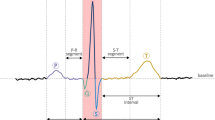Abstract
This paper introduces a new theory and algorithm that can be used in blind detection of the carrier wave signal and the pseudo-random sequence of the direct sequence spread spectrum (DS/SS) signal with negative SNR. First, without any a priori knowledge of the DS/SS signal, the carrier wave signal can be detected from DS/SS signal with negative SNR by using stochastic differential equations and energy detection method. Based on this, the pseudo-random sequence can also be blindly detected in DS/SS signal with negative SNR by reducing noise of the nonlinear signal and the algorithm of wavelet multiscale decomposition algorithm. Finally, the computer simulation shows that we can detect the carrier wave signal with SNR=−27 dB and the pseudo-random sequence under error code ratio 10−4 with SNR=−10 dB.
Similar content being viewed by others
References
Zhu J K. A detected method of spectral correlation for spread spectrum communications. J China Inst Commun (in Chinese), 1998, 19: 8–14
Zhang T Q. Reconnaissance and estimation of DS/SS signals by spectra analysis and neural networks. Syst Engin Elect (in Chinese), 2001, 23: 12–15
Liu G, Zhi Q. The application of enhanced spectrum-reprocessing to the duration estimation of the PN sequence of DS/SS signal. Elect Warf Tech (in Chinese), 2003, 3: 26–28
Mou Q, Wei P. The performance of reconnaissance and estimation for DS/SS signals. Aerospace Elect Warf (in Chinese), 2004, 2: 50–54
Dai L, Zhang H P, Wen Z J, et al. DS/SS analysis of cyclic-stabilization characteristic. Syst Engin Elect (in Chinese), 2004, 26: 1038–1039
Wu J L, Gou Y X. An exploration on blind interception of DS signal. Commun Countermeas (in Chinese), 2005, 2: 27–29
Liu J N, Yuan L, Gao M G, et al. A method of fast reconnaissance to the code rate of DS/SS signal. Modern Defense Tech (in Chinese), 2005, 33: 62–64
Zi X J, Xie D, Yi K C, et al. The duration estimation of the PN sequence of DS/SS signal based on fourth-order cumulant. Elect Warf Tech (in Chinese), 2006, 21: 18–21
Tao L, Wu C H. Reconnaissance of direct-sequence spread-spectrum signal and research of its parameter estimation technology. Shipboard Elect Warf (in Chinese), 2006, 26: 36–39
Han G L, Tian H X. Reconnaissance method in communication. Wireless Commun Tech (in Chinese), 2006, 1: 39–43
Yu J D, Guo W, Li M, et al. Cyclic spectrum-based DS/SS signal reconnaissance and parameter estimation. J Univ Elect Sci Tech China (in Chinese), 1996, 25: 439–444
Gilles B, Celine B. Blind estimation of the pseudo-random sequence of a direct sequence spread spectrum signal. IEEE-MILCOM, 2000, 10: 967–970
Zhang T Q, Zhang C W, Lin X K, et al. Algorithms for period and sequence estimation of the PN code in DS/SS signals. Syst Engin Elect (in Chinese), 2005, 27: 1365–1368
Zhang T Q, Lin X K. A new method for periodic and sequence estimation of the PN code in the lower SNR DS/SS signals. Chin J Radio Sci (in Chinese), 2005, 20: 400–405
Zhang T Q, Zhou Z Z, Guo Z X, et al. A neural network approach to estimation of PN spreading sequence in DS/SS signals. Signal Proc (in Chinese), 2001, 17: 533–537
Liu J. A study on direct-sequence spread spectrum despreading without the code (in Chinese). Degree Paper of North China Electric Power University, 2001
Bernt K. Stochastic Differential Equations. Berlin: Springer-Verlag, 1998
Lee C, Williams B. A noise reduction method for chaotic signals. In: Proc. IEEE Int. Conf. on Acoustics, Speech and Signal Processing, 1995, 2: 1348–1351
Farmer D J, John, J S. Optical shadowing and noise reduction. Phyica D, 1991, 47: 373–346
Huang X G, Xu J X, He D M, et al. Reduction of noise in chaotic systems by wavelet multiscaling decomposition algorithm. Acta Phys Sin, 1999, 10: 1810–1187
Huang X G, Xu J X, He D M, et al. Unmasking chaotic mask by a wavelet multiscaling decomposition algorithm. Inter J Bifur Chaos, 2001, 11: 561–569
Author information
Authors and Affiliations
Corresponding author
Additional information
Supported by the National Defence Key Foundation of China (Grant No. 614144)
Rights and permissions
About this article
Cite this article
Huang, X., Huang, W., Wang, C. et al. Blind reconnaissance of the pseudo-random sequence in DS/SS signal with negative SNR. SCI CHINA SER F 50, 510–520 (2007). https://doi.org/10.1007/s11432-007-0039-0
Received:
Accepted:
Issue Date:
DOI: https://doi.org/10.1007/s11432-007-0039-0




